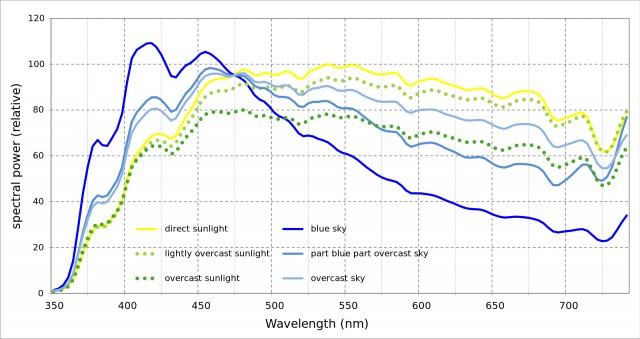forum
library
tutorial
contact

New Material Combines Photons
for Big Solar Energy Gains
by Graham Templeton
Extreme Tech, July 28, 2015
|
the film forum library tutorial contact |

|
New Material Combines Photons
by Graham Templeton
|
 An innovative new approach to solar energy from University of California Riverside could dramatically increase the amount of light available to contemporary solar panel designs. Rather than widening the absorption spectrum of the solar panels themselves, this new study looked at taking currently inaccessible infra-red light and turning it into visible light. They hope that by directing this newly fabricated light onto conventional solar panels, the efficiency of solar power could be greatly improved, for an affordable price.
An innovative new approach to solar energy from University of California Riverside could dramatically increase the amount of light available to contemporary solar panel designs. Rather than widening the absorption spectrum of the solar panels themselves, this new study looked at taking currently inaccessible infra-red light and turning it into visible light. They hope that by directing this newly fabricated light onto conventional solar panels, the efficiency of solar power could be greatly improved, for an affordable price.
Infrared light currently passes straight through most silicon solar cell technologies, representing a substantial inefficiency in generating electricity from sunlight. Much of solar research has worked to directly convert infrared light to electricity, but such technologies change the transistor design, and thus the manufacturing process for solar panels. Their impacts tend to be limited by cost concerns, more than anything else.
These researchers chose to accept the absorptive abilities of current silicon transistors, and instead looked to make the light conform to the panels. They created an all-new hybrid material that takes two photons of 980-nanometer infrared light shone onto it and "up converts" them into one photon of 550-nanometer orange/yellow light. This photon has almost double the energy of the originals and, more importantly, it exists in a form that existing solar panels can absorb.
By changing the incoming sunlight into silicon's favorite for absorption, the material could improve solar panel efficiency by as much as 30%. And while the costs of the material itself are not yet known, there is huge potential in offering such large improvements without the need to completely reinvent the transistor manufacturing process.
This hybrid material combines two things: an inorganic layer with semiconductor nanoparticles -- this absorbs the infrared light, but isn't capable of directly passing it into the electricity generating process. Instead, the light moves on to the organic phase of the material, which takes these long-wavelength photons and combines them. The resulting, lower-wavelength photons can move on to be absorbed by the transistors of the solar panel as normal, just as though it has been that color upon first arrival.
The overall costs of solar power lie much more in installation, maintenance, and land use costs than in the panels themselves; adding a new layer of this IR-capturing material would certainly increase panel costs, but could still improve the affordability of solar power. Infrared radiation accounts for an enormous amount of the energy in direct sunlight, and it is currently being missed by every solar panel outside of a research laboratory.
In general, this sort of research into the manipulation of light could allow a wider rollout of solar power around the world. Plenty of raw energy is falling on highly clouded days, but the distribution of that energy through the spectrum is different, and harder for modern solar panels to turn into power. Infrared radiation moves through and overcast sky quite well, however; if its energy could be added to that of the cloud-filtered visible light, solar might start to make good financial sense in less sunny areas than Texas and California.
The ability to accurately convert photons between wavelengths could have a wide range of applications, from medical imaging to optical data storage, but none is so direct as solar power. Energy will be one of the defining issues of the next few decades, and while some all-new tech revolution may end up saving the day, evolutionary steps like this one will be needed to sustain the world until that day comes.
learn more on topics covered in the film
see the video
read the script
learn the songs
discussion forum
